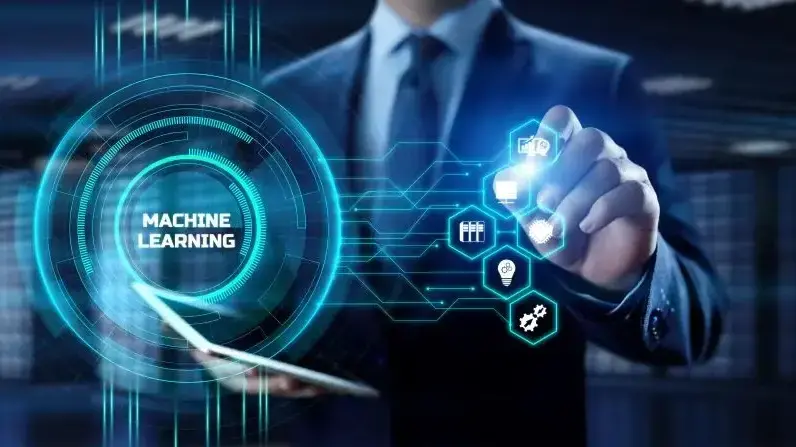Image recognition has become one of the most fascinating applications of modern technology. It is the process by which computers identify and analyze images, making sense of objects, patterns, or features in a way similar to human vision. Machine learning, particularly deep learning, plays a central role in powering these capabilities. Today, image recognition is used in healthcare, security, retail, and many other sectors, shaping how humans and machines interact.
Understanding Machine Learning in Image Recognition
Machine learning is a branch of artificial intelligence where computers learn from data and improve performance without being explicitly programmed. In image recognition, this means training models with thousands or even millions of labeled images until the system can recognize objects accurately.
For example, when training a system to recognize cats in photos, the model is shown countless images of cats and non-cats. Over time, it learns the unique features that distinguish cats such as their eyes, ears, and body shape. Once trained, the system can detect cats in new, unseen images with high accuracy.
The Role of Neural Networks
At the core of image recognition lies neural networks, particularly convolutional neural networks (CNNs). These networks mimic the way the human brain processes visual information. They use multiple layers to extract features from an image, beginning with basic details like edges and progressing to more complex structures such as shapes and textures.
CNNs are highly effective because they can recognize spatial patterns, making them ideal for tasks like face detection, medical imaging, and autonomous driving. Each layer of the network refines the interpretation, allowing the system to identify an object even if it is rotated, resized, or partially obscured.
Applications in Healthcare
One of the most transformative uses of machine learning in image recognition is in healthcare. Medical imaging systems powered by AI can analyze X-rays, MRIs, and CT scans to detect diseases with remarkable accuracy.
For example:
- Identifying early signs of cancer in radiology images
- Detecting tumors, fractures, or infections
- Assisting doctors in diagnosing rare conditions
This not only speeds up the diagnostic process but also reduces human error, providing better healthcare outcomes for patients.
Enhancing Security Systems
Security and surveillance rely heavily on image recognition today. Machine learning enables facial recognition systems to identify individuals in crowded spaces, track movements, and even detect suspicious behavior.
Applications include:
- Airport security and border control
- Unlocking smartphones using facial scans
- Monitoring public areas for potential threats
While this technology raises concerns about privacy, it continues to grow as an essential tool for maintaining safety.
Retail and E-commerce Innovations
Retailers use image recognition to improve customer experiences. Online platforms now allow users to search for products simply by uploading an image. If a customer sees a pair of shoes they like, they can upload a picture and instantly find similar items for purchase.
Other uses include:
- Automated checkout systems that recognize items without barcodes
- Personalized product recommendations based on browsing patterns
- Real-time inventory management in warehouses
These advancements make shopping faster, more personalized, and more efficient.
The Role in Autonomous Vehicles
Self-driving cars rely on image recognition to navigate safely. Machine learning models process input from cameras and sensors to detect pedestrians, traffic signs, road markings, and obstacles. By interpreting the surrounding environment in real time, the system can make driving decisions that ensure passenger and pedestrian safety.
Without advanced image recognition, autonomous vehicles would struggle to function effectively, highlighting the importance of machine learning in this sector.
Challenges in Machine Learning for Image Recognition
Despite its progress, image recognition still faces several challenges:
- Data quality: Poor or biased datasets can lead to inaccurate results.
- Computational power: Training deep learning models requires significant processing capabilities.
- Privacy concerns: Facial recognition raises ethical debates about surveillance and misuse.
- Misidentification: Errors can have serious consequences, especially in areas like healthcare and security.
Addressing these issues requires continuous research, better regulation, and ethical considerations in development and deployment.
The Future of Image Recognition with Machine Learning
Looking ahead, machine learning in image recognition will only grow more advanced. Emerging technologies like generative adversarial networks (GANs) and reinforcement learning are pushing boundaries further. In the near future, we may see:
- Smarter medical systems that provide instant diagnoses in remote areas
- More efficient agricultural monitoring through drone-based image recognition
- Real-time translation of visual signs and text across languages
- Smarter city surveillance with AI-driven image processing
As computing power increases and algorithms become more sophisticated, the accuracy and reliability of image recognition will continue to improve.
Conclusion
Machine learning has revolutionized the way machines understand and interpret images. From healthcare and security to retail and transportation, its applications are reshaping industries globally. Neural networks, especially CNNs, remain at the heart of these breakthroughs, enabling machines to learn patterns and features with human-like precision.
Although challenges such as privacy concerns and data limitations remain, the potential of machine learning in image recognition is undeniable. As the technology continues to evolve, it promises to bring even greater innovations that will transform how we live, work, and interact with the world.




This should be emphasized on more please